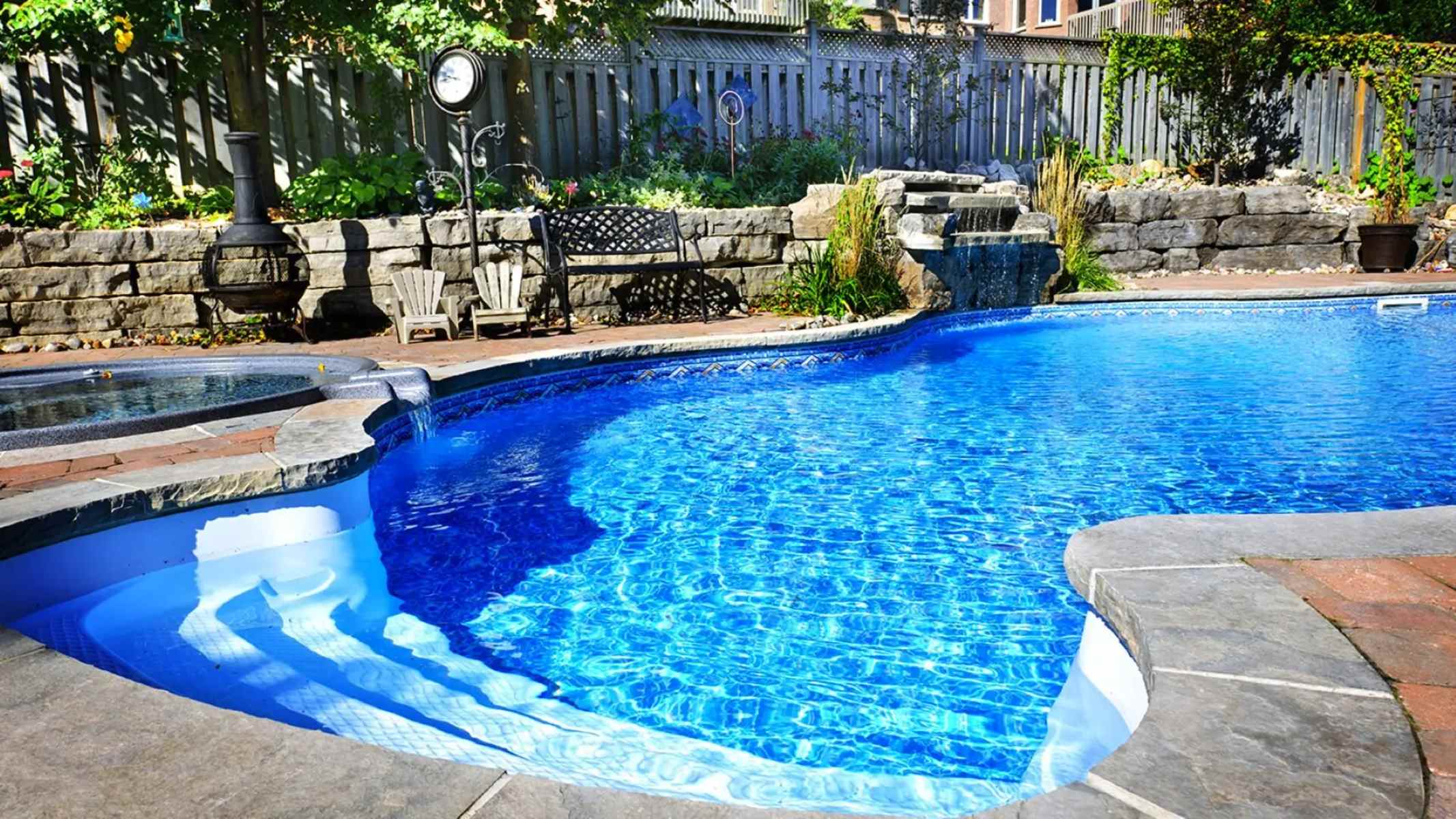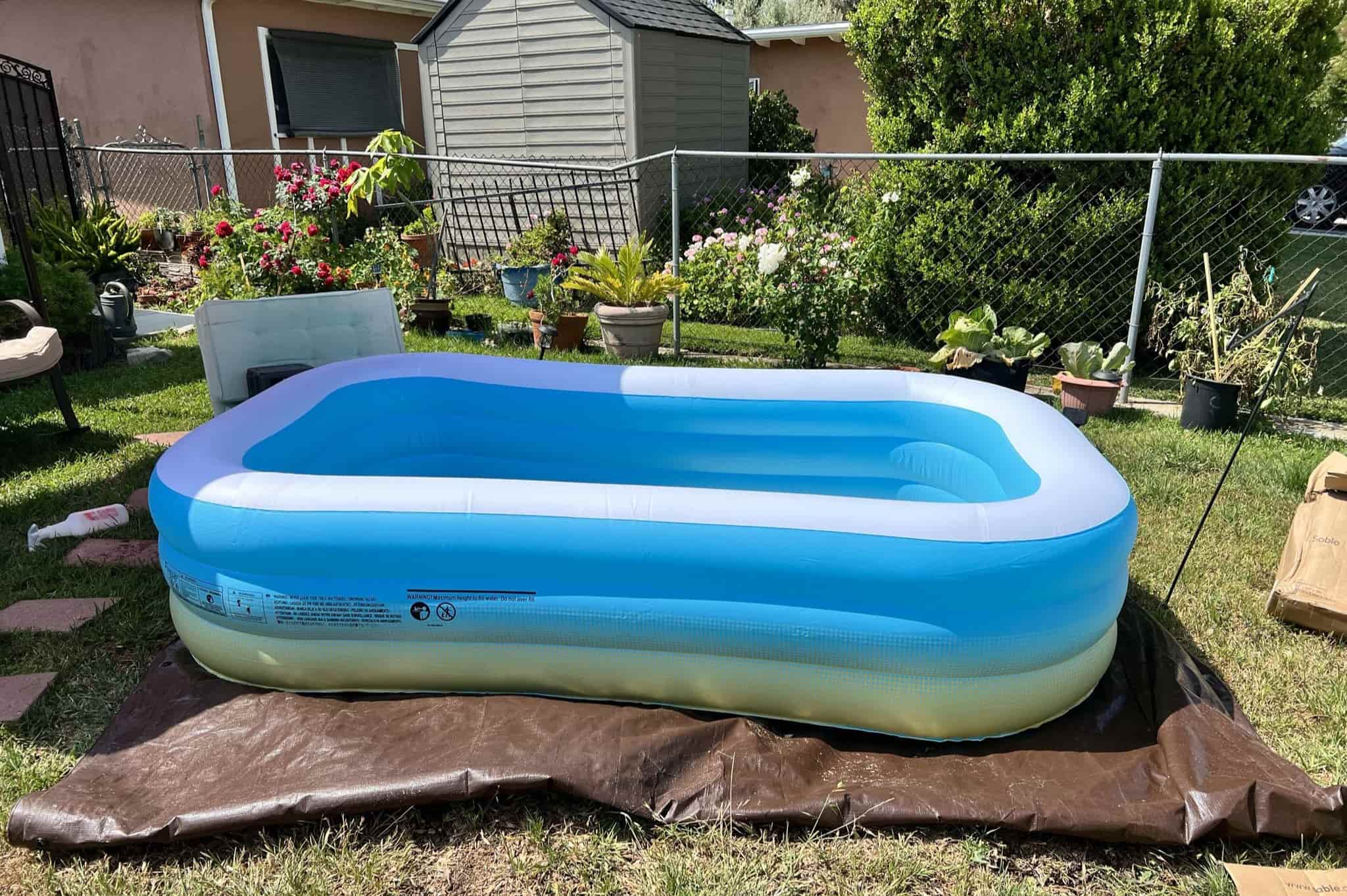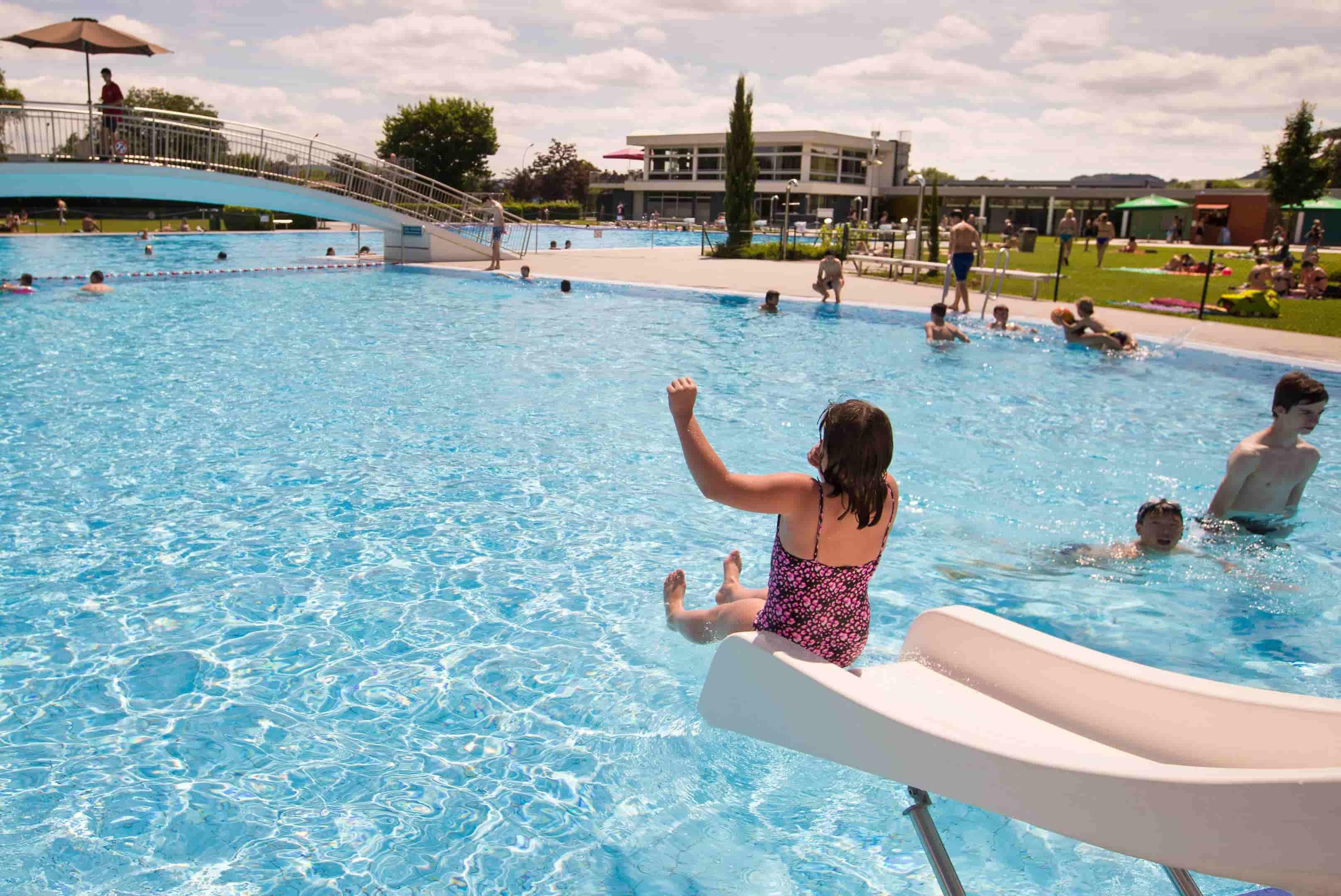Home>Gardening & Outdoor>Outdoor Recreation & Activities>How To Convert Your Swimming Pool To Saltwater


Outdoor Recreation & Activities
How To Convert Your Swimming Pool To Saltwater
Published: February 17, 2024
Learn how to easily convert your swimming pool to a saltwater system for a more enjoyable and low-maintenance outdoor recreation and activities experience. Discover the benefits and steps to make the switch today!
(Many of the links in this article redirect to a specific reviewed product. Your purchase of these products through affiliate links helps to generate commission for Storables.com, at no extra cost. Learn more)
Introduction
Are you considering converting your traditional chlorine-based swimming pool to a saltwater system? This transformation can bring about a refreshing change to your pool experience, offering numerous benefits and a more enjoyable swimming environment. Saltwater pools have gained popularity in recent years due to their lower maintenance requirements and the gentle, skin-friendly water they provide. In this comprehensive guide, we will explore the advantages of converting to a saltwater pool, the step-by-step process of making the switch, and essential maintenance tips to keep your saltwater oasis in pristine condition.
The decision to convert to a saltwater pool marks a significant shift in the way you maintain and enjoy your swimming pool. By understanding the benefits of this conversion and the necessary steps involved, you can make an informed choice that aligns with your preferences and lifestyle. Let's delve into the details of this exciting transformation and discover how it can elevate your pool experience to new heights.
Key Takeaways:
- Dive into the Benefits
Converting to a saltwater pool brings gentler water, lower maintenance, and potential health perks. Enjoy a more comfortable and eco-friendly swimming experience with long-term cost savings. - Smooth Conversion Process
Follow systematic steps to transform your pool into a saltwater oasis. From assessing compatibility to balancing water chemistry, create a rejuvenating and sustainable aquatic retreat.
Read more: How To Make A Saltwater Swimming Pool
Benefits of Converting to Saltwater
-
Gentler on Skin and Eyes: Unlike traditional chlorine pools, saltwater pools use a mild saline solution to sanitize the water. This results in a gentler swimming experience, reducing the likelihood of skin irritation and red, stinging eyes often associated with chlorinated pools.
-
Lower Maintenance: Saltwater pools require less maintenance compared to their chlorine counterparts. The automated chlorine generation process in saltwater pools eliminates the need for frequent manual chlorination, saving you time and effort in pool upkeep.
-
Cost-Effective: While the initial conversion to a saltwater system may require an investment, the long-term cost savings can be substantial. With reduced reliance on chemical additives and lower maintenance demands, saltwater pools can lead to decreased operational expenses over time.
-
Environmentally Friendly: Saltwater pools utilize a natural chlorine generation process, minimizing the need for additional chemical treatments. This eco-friendly approach reduces the environmental impact associated with traditional pool maintenance, making saltwater pools a sustainable choice for conscientious pool owners.
-
Enhanced Comfort: The mild salinity of saltwater pools provides a more comfortable swimming environment, akin to a rejuvenating dip in the ocean. Swimmers often appreciate the silky feel of the water, which can contribute to a more enjoyable and relaxing pool experience.
-
Reduced Chemical Exposure: By relying on a self-regulating chlorine generation system, saltwater pools reduce direct exposure to concentrated chlorine chemicals. This can be particularly beneficial for individuals with sensitivities or allergies to traditional pool chemicals.
-
Longer Lasting Equipment: The lower chemical concentration in saltwater pools can contribute to the prolonged longevity of pool equipment and infrastructure. This can result in reduced maintenance and replacement costs for essential pool components.
-
Continuous Chlorine Production: Saltwater pools continuously generate chlorine, ensuring a consistent level of sanitation without the need for frequent manual adjustments. This automated process helps maintain water clarity and hygiene, offering peace of mind to pool owners.
-
Appealing Aesthetics: Saltwater pools often exhibit crystal-clear water that enhances the visual appeal of the pool area. The natural sparkle and clarity of saltwater can elevate the overall ambiance of your outdoor space, creating an inviting and picturesque setting for leisure and relaxation.
-
Potential Health Benefits: Some individuals find that swimming in saltwater pools offers therapeutic benefits, such as improved skin hydration and potential relief for certain skin conditions. The mineral content in saltwater can contribute to a rejuvenating and invigorating swimming experience.
In summary, the decision to convert to a saltwater pool presents a myriad of benefits, ranging from improved comfort and reduced maintenance to environmental sustainability and potential health advantages. These compelling advantages make the transition to a saltwater system an appealing choice for pool owners seeking a more enjoyable, cost-effective, and eco-conscious swimming experience.
Steps to Convert Your Swimming Pool
Converting your swimming pool to a saltwater system involves a series of systematic steps to ensure a seamless transition. By following these guidelines, you can effectively transform your pool into a rejuvenating saltwater oasis. Here's a detailed overview of the essential steps involved in this conversion process:
-
Assess Your Pool's Compatibility: Begin by evaluating the compatibility of your existing pool structure and equipment with a saltwater system. Check the condition of the pool shell, filtration system, and other components to ensure they can accommodate the transition to saltwater.
-
Determine the Saltwater Generator Size: Select an appropriate saltwater generator based on the size and water capacity of your pool. The generator is responsible for converting salt into chlorine, so it's crucial to choose a model that aligns with your pool's specifications for optimal performance.
-
Calculate Salt Requirements: Determine the precise amount of salt needed to achieve the recommended salinity level for your pool. This typically involves adding a specific quantity of pool-grade salt based on the volume of water in your pool, as outlined in the manufacturer's guidelines.
-
Drain and Clean the Pool: Prior to introducing the saltwater system, drain the pool and thoroughly clean the interior surfaces to remove any accumulated debris, algae, or residual chemicals. This preparatory step ensures a clean foundation for the saltwater conversion.
-
Install the Saltwater Generator: Once the pool is clean and dry, proceed with the installation of the saltwater generator according to the manufacturer's instructions. This typically involves mounting the generator near the existing filtration system and connecting it to the pool's plumbing.
-
Add Pool-Grade Salt: After the generator is installed, carefully add the prescribed amount of pool-grade salt directly into the pool water. Use a pool brush to help distribute the salt evenly and allow it to dissolve naturally.
-
Initiate the Chlorine Generation Process: Activate the saltwater generator to commence the chlorine production process. Monitor the generator's settings and ensure that it is functioning correctly to maintain the desired chlorine levels in the pool.
-
Balance Water Chemistry: Test the water chemistry regularly to ensure that the salt levels, pH, alkalinity, and calcium hardness are within the recommended ranges. Make any necessary adjustments to achieve balanced and healthy pool water.
-
Monitor and Fine-Tune: Continuously monitor the saltwater pool's performance and make any fine-tuning adjustments to the salt levels or generator settings as needed. Regular maintenance and observation are essential to ensure the optimal functioning of the saltwater system.
By following these step-by-step guidelines, you can successfully convert your swimming pool to a saltwater system, unlocking the numerous benefits and a more enjoyable swimming experience. With proper planning and execution, this transformation can elevate your pool environment to new heights of comfort, sustainability, and relaxation.
Maintenance Tips for Saltwater Pool
Maintaining a saltwater pool involves specific care practices to preserve water quality, equipment longevity, and overall pool functionality. By adhering to these essential maintenance tips, you can ensure that your saltwater oasis remains a pristine and inviting environment for leisure and relaxation.
Regular Water Testing
Consistent water testing is paramount for monitoring the chemical balance and overall water quality in a saltwater pool. Utilize a reliable water testing kit to assess the salt levels, pH, alkalinity, and calcium hardness on a routine basis. This proactive approach allows you to identify any imbalances or irregularities promptly, enabling timely adjustments to maintain optimal water chemistry.
Read more: How To Open A Saltwater Swimming Pool
Monitor Salt Levels
Maintain a close eye on the salt levels in your pool to ensure that they remain within the recommended range. Periodically check the salinity using a saltwater-specific test kit and add salt as needed to uphold the appropriate concentration. Proper salt levels are crucial for the effective operation of the saltwater generator and the overall comfort of swimmers.
Clean the Salt Cell
The salt cell, a vital component of the saltwater system responsible for chlorine generation, requires regular cleaning to prevent mineral buildup and ensure efficient performance. Follow the manufacturer's guidelines to inspect and clean the salt cell as recommended, typically using a diluted acid solution to remove scale and deposits.
Brush and Vacuum the Pool
Regularly brush the pool walls and floor to prevent algae growth and sediment accumulation. Additionally, use a pool vacuum to remove debris and maintain water clarity. Consistent brushing and vacuuming contribute to a cleaner and healthier pool environment, reducing the strain on the filtration system and enhancing overall water circulation.
Inspect and Maintain Equipment
Periodically inspect the saltwater generator, filtration system, pump, and other pool equipment to identify any signs of wear, leaks, or malfunctions. Address any issues promptly and adhere to the manufacturer's maintenance guidelines to ensure the proper functioning and longevity of essential pool components.
Read more: How To Keep Frogs Out Of Your Swimming Pool
Address Chlorine Demand
Be mindful of fluctuations in chlorine demand, especially during periods of heavy pool usage or environmental factors that may impact water quality. Adjust the saltwater generator settings as needed to meet the chlorine demand and maintain consistent sanitation levels, promoting a safe and hygienic swimming environment.
Winterization Preparation
If you reside in a region with cold winters, prepare your saltwater pool for the off-season by following proper winterization procedures. This may include adjusting water levels, protecting equipment from freezing temperatures, and adding winterizing chemicals as recommended to safeguard the pool during the dormant months.
Professional Servicing
Consider scheduling periodic professional servicing and maintenance checks for your saltwater pool. Experienced technicians can conduct thorough inspections, equipment servicing, and fine-tuning to ensure the optimal performance and longevity of your saltwater system.
By integrating these maintenance tips into your pool care routine, you can uphold the pristine condition of your saltwater oasis and enjoy a consistently refreshing and inviting swimming environment. With proactive care and attention, your saltwater pool can continue to provide a rejuvenating and sustainable aquatic retreat for years to come.
Conclusion
In conclusion, the decision to convert your swimming pool to a saltwater system represents a transformative step toward a more enjoyable, sustainable, and low-maintenance pool experience. The numerous benefits of saltwater pools, including gentler water quality, reduced maintenance demands, cost-effectiveness, and environmental friendliness, underscore the appeal of this conversion. By embracing the shift to a saltwater oasis, pool owners can elevate their leisure and relaxation while contributing to a more eco-conscious approach to pool maintenance.
The process of converting to a saltwater pool involves careful planning, meticulous execution, and ongoing maintenance to ensure optimal performance and water quality. From assessing pool compatibility and selecting the right saltwater generator to balancing water chemistry and implementing regular maintenance practices, each step is essential in creating a rejuvenating saltwater environment. By following the outlined steps and integrating proactive maintenance tips, pool owners can seamlessly transition to a saltwater system and reap the long-term rewards of this conversion.
Furthermore, the appeal of saltwater pools extends beyond their practical advantages, encompassing the aesthetic allure and potential health benefits they offer. The silky feel of saltwater, the continuous chlorine generation process, and the potential therapeutic effects contribute to a more inviting and rejuvenating swimming environment. Additionally, the reduced chemical exposure and prolonged equipment longevity associated with saltwater pools align with the growing emphasis on health-conscious and sustainable living.
Ultimately, the decision to convert to a saltwater pool reflects a commitment to enhancing the overall pool experience while embracing a more environmentally friendly and cost-effective approach to pool maintenance. By embracing the transformative potential of saltwater systems, pool owners can create a harmonious balance between leisure, sustainability, and well-being, fostering a welcoming aquatic retreat for themselves and their loved ones.
In essence, the journey toward a saltwater pool represents a holistic shift toward a more enjoyable, eco-conscious, and sustainable approach to pool ownership. By embracing the benefits of saltwater systems and implementing the necessary steps and maintenance practices, pool owners can embark on a refreshing and rewarding aquatic adventure, creating lasting memories and moments of relaxation in their own saltwater oasis.
Frequently Asked Questions about How To Convert Your Swimming Pool To Saltwater
Was this page helpful?
At Storables.com, we guarantee accurate and reliable information. Our content, validated by Expert Board Contributors, is crafted following stringent Editorial Policies. We're committed to providing you with well-researched, expert-backed insights for all your informational needs.














0 thoughts on “How To Convert Your Swimming Pool To Saltwater”